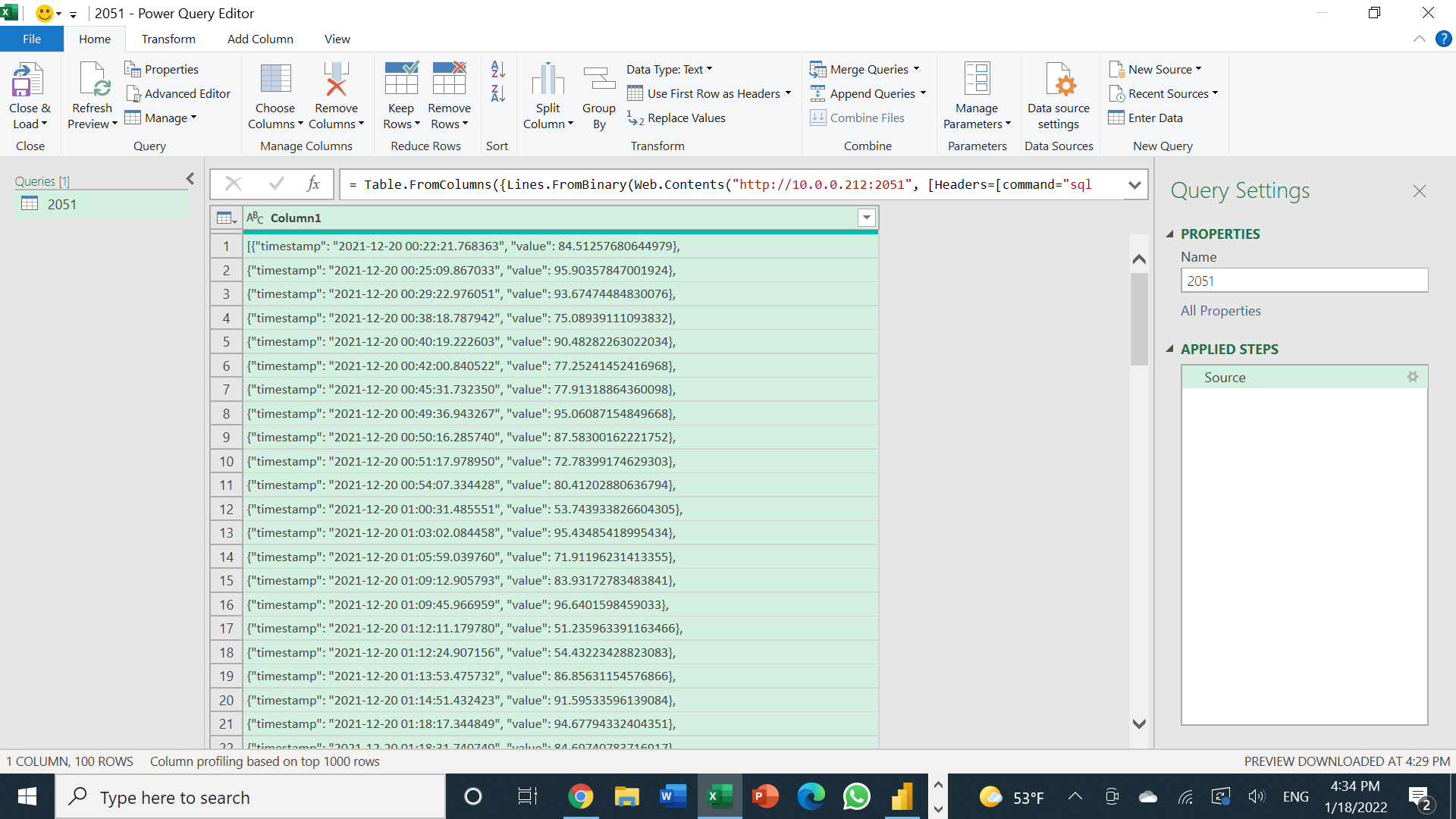EdgeLake with PowerBI
The following provides insight as to how to generate graphs and images using Microsoft PowerBI with data from EdgeLake. The same process can be done with Excel and other Microsoft tools.
Sample REST request
In order to support PowerBI, return data as a list of JSON values without the statistical information.
Sample cURL request
curl -X GET 10.1.2.10:2149 \
-H 'command: sql aiops format=json:list and stat=false "SELECT date(timestamp) as timestamp, min(value) as min, avg(value) as avg, max(value) as max FROM lic1_mv group by timestamp ORDER by timestamp limit 10"' \
-H "User-Agent: AnyLog/1.23" \
-H "destination: network" -w "\n"
Sample Output (the data is returned as a list of JSON objects).
[
{"timestamp": "2021-12-17", "min": 16.07562231854013, "avg": 16.07562231854013, "max": 16.07562231854013},
{"timestamp": "2021-12-18", "min": 0.7819949317261932, "avg": 37.58098167042068, "max": 85.13897566679766},
{"timestamp": "2021-12-22", "min": 3.545549704985503, "avg": 44.07391736121831, "max": 75.688516046041},
{"timestamp": "2021-12-23", "min": 30.13388089233143, "avg": 54.983077931262265, "max": 84.77061503184196},
{"timestamp": "2021-12-29", "min": 17.614363625825547, "avg": 47.44901351353519, "max": 79.27651061410472},
{"timestamp": "2021-12-30", "min": 12.324781800659816, "avg": 45.14157473898287, "max": 78.54948001563031},
{"timestamp": "2022-01-01", "min": 19.389259167237835, "avg": 62.144516285293186, "max": 98.28053568049772},
{"timestamp": "2022-01-02", "min": 50.596673938692426, "avg": 50.596673938692426, "max": 50.596673938692426},
{"timestamp": "2022-01-08", "min": 53.17291222256768, "avg": 78.21358089166576, "max": 93.42429844531414},
{"timestamp": "2022-01-09", "min": 54.664901456750904, "avg": 75.73146536262269, "max": 96.79802926849446}
]
Using PowerBI
- Under Get Data open Web
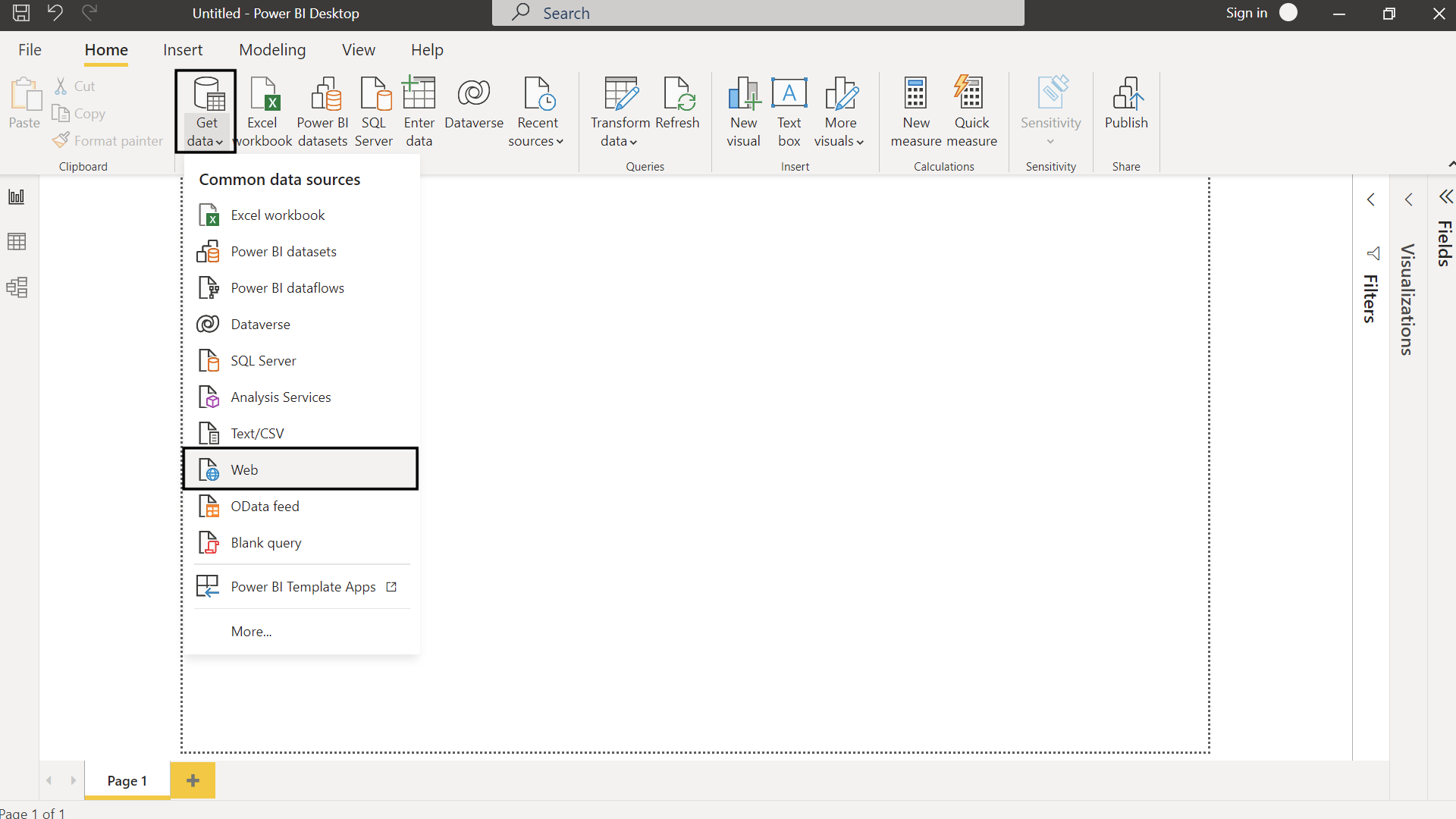
- In the Advanced option fill-out the URL, and HEADER parameters. Once the form is filled out press "OK"
{ "command": "[YOUR QUERY]", "User-Agent": "AnyLog/1.23", "destination": "network" }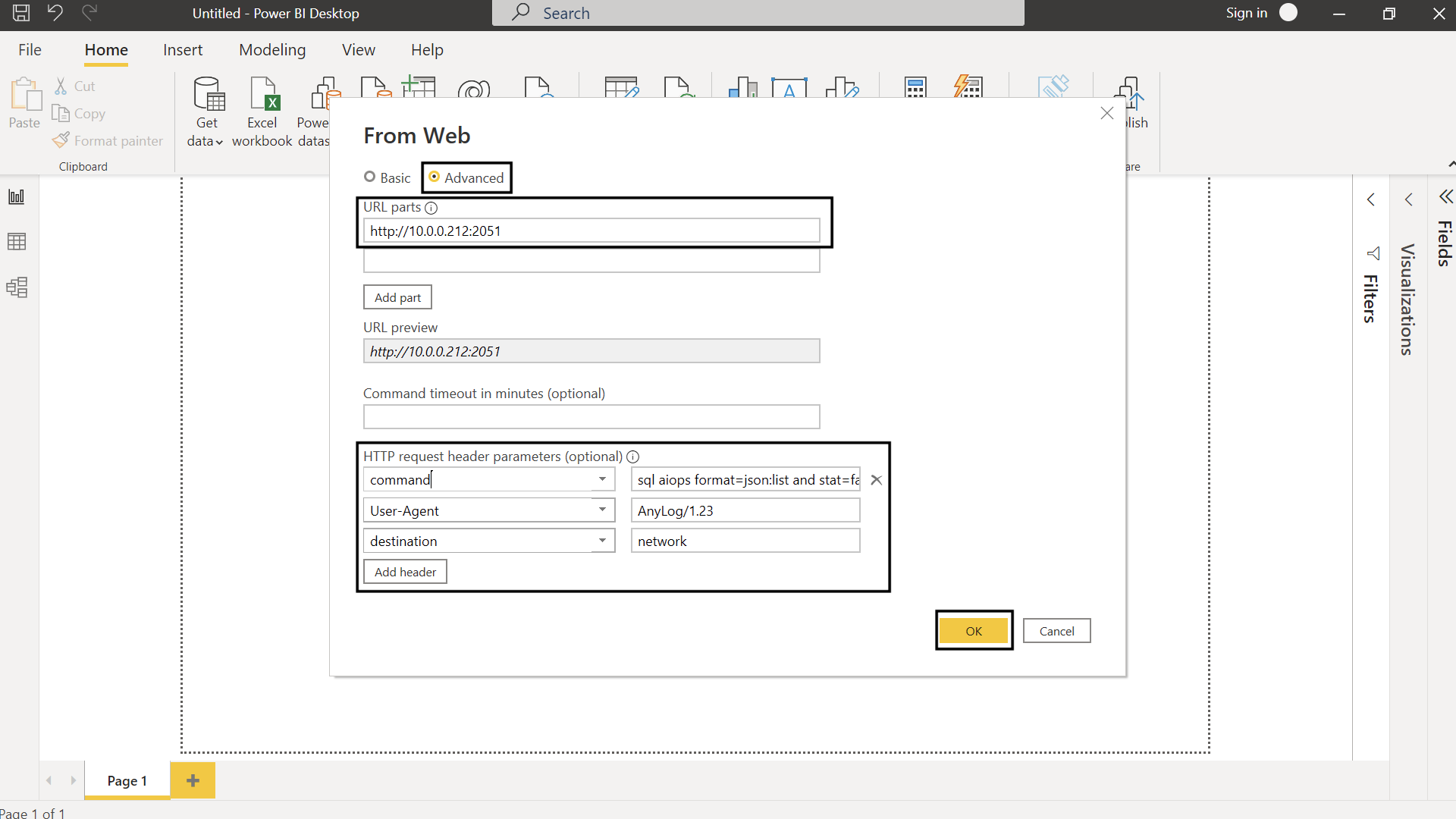
- Right-click and & select JSON
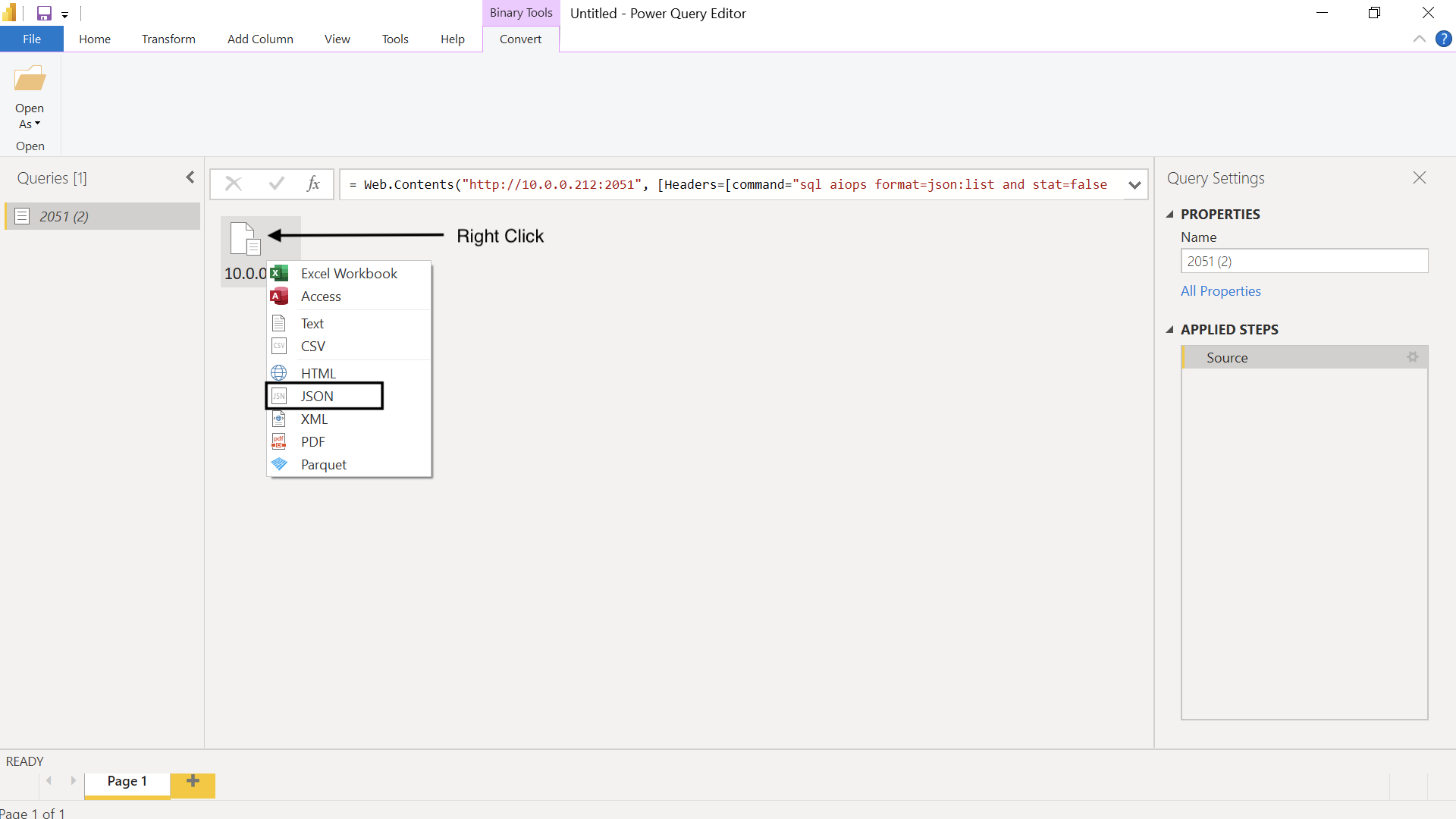
- Right-click on **List** & select _To Table_
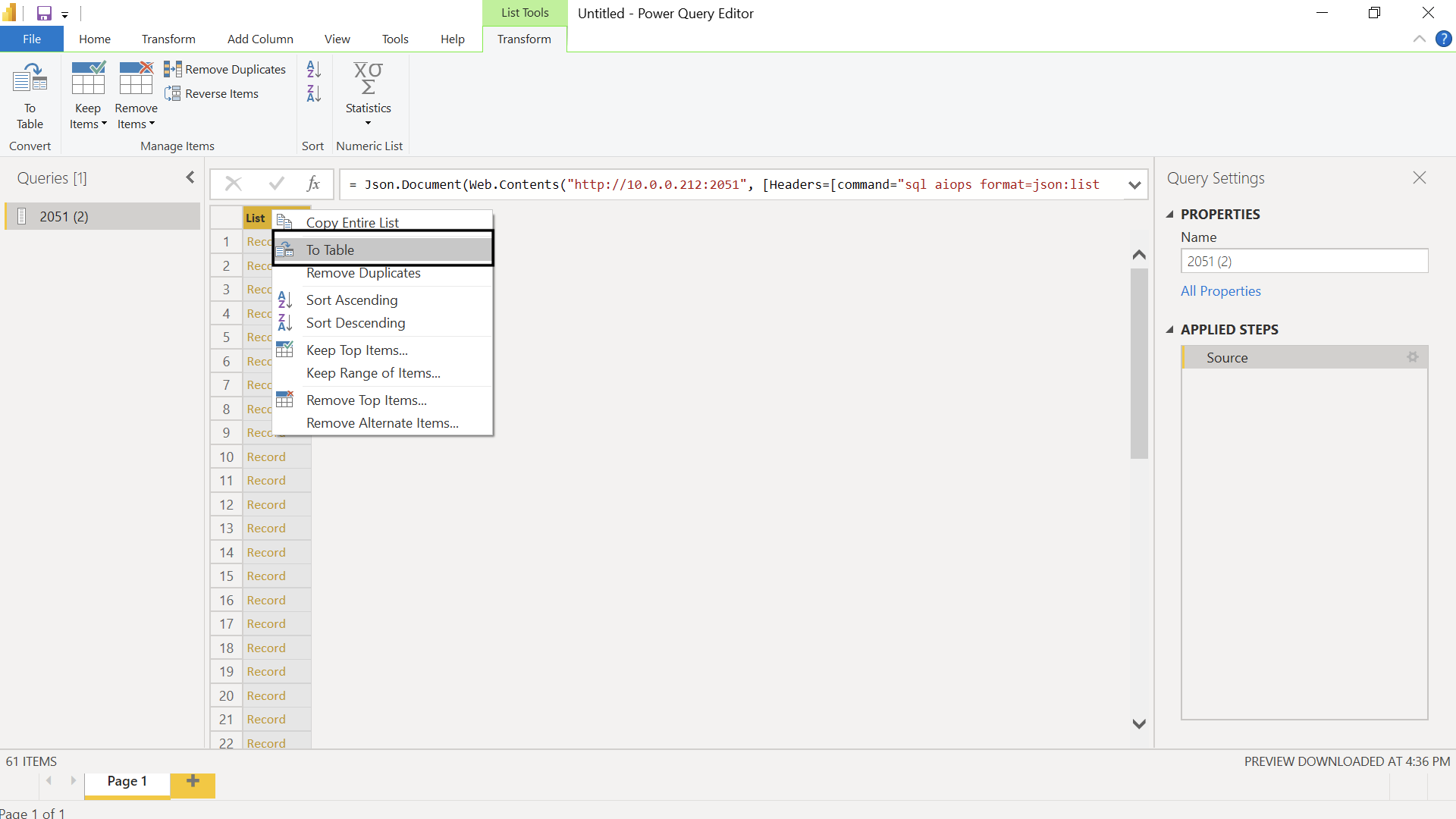
- Keep defaults (None) and press "OK"
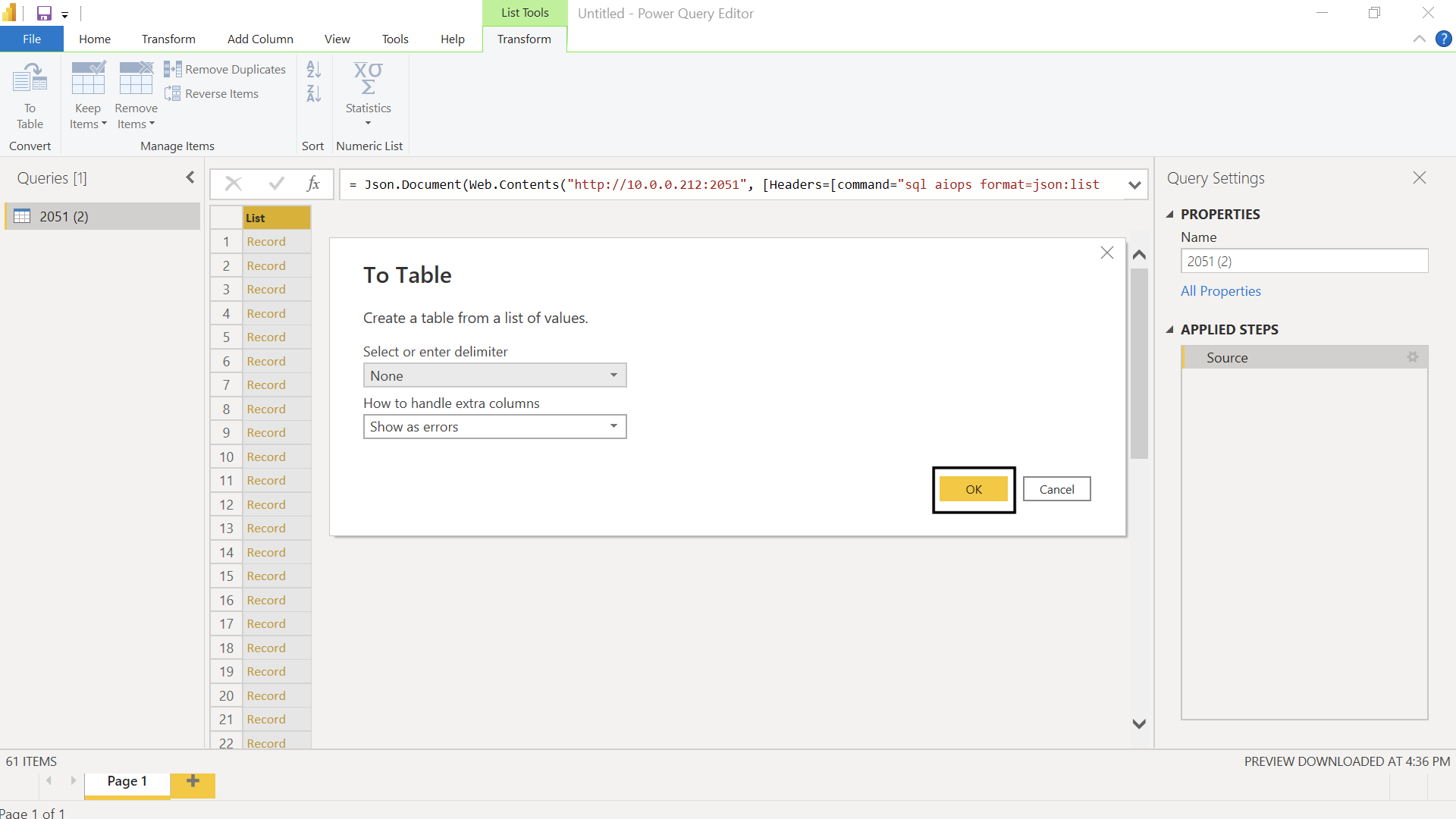
- Press the button on the right of the column to view list of columns. This will show the different JSON keys that’ll be converted to table columns
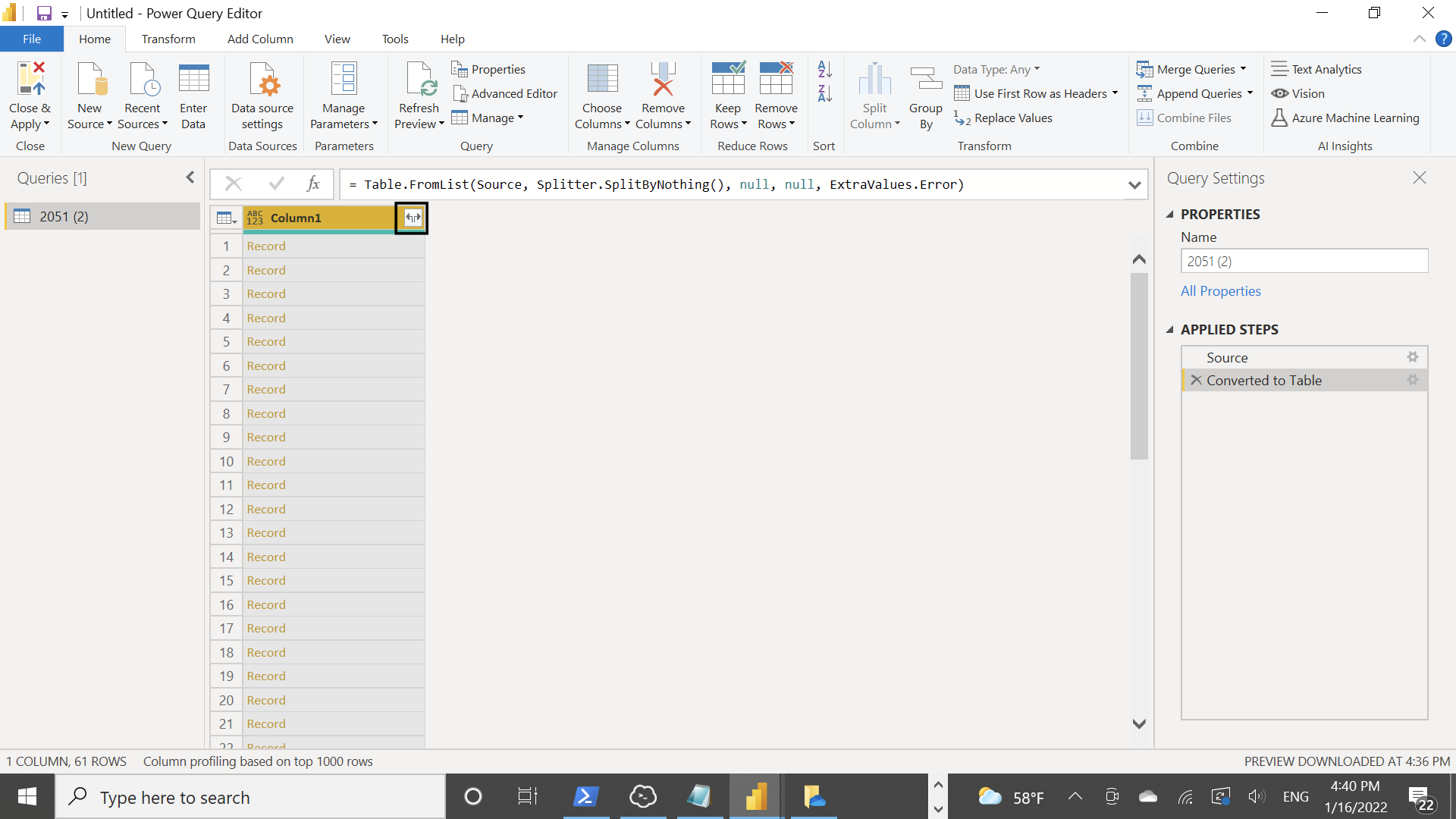
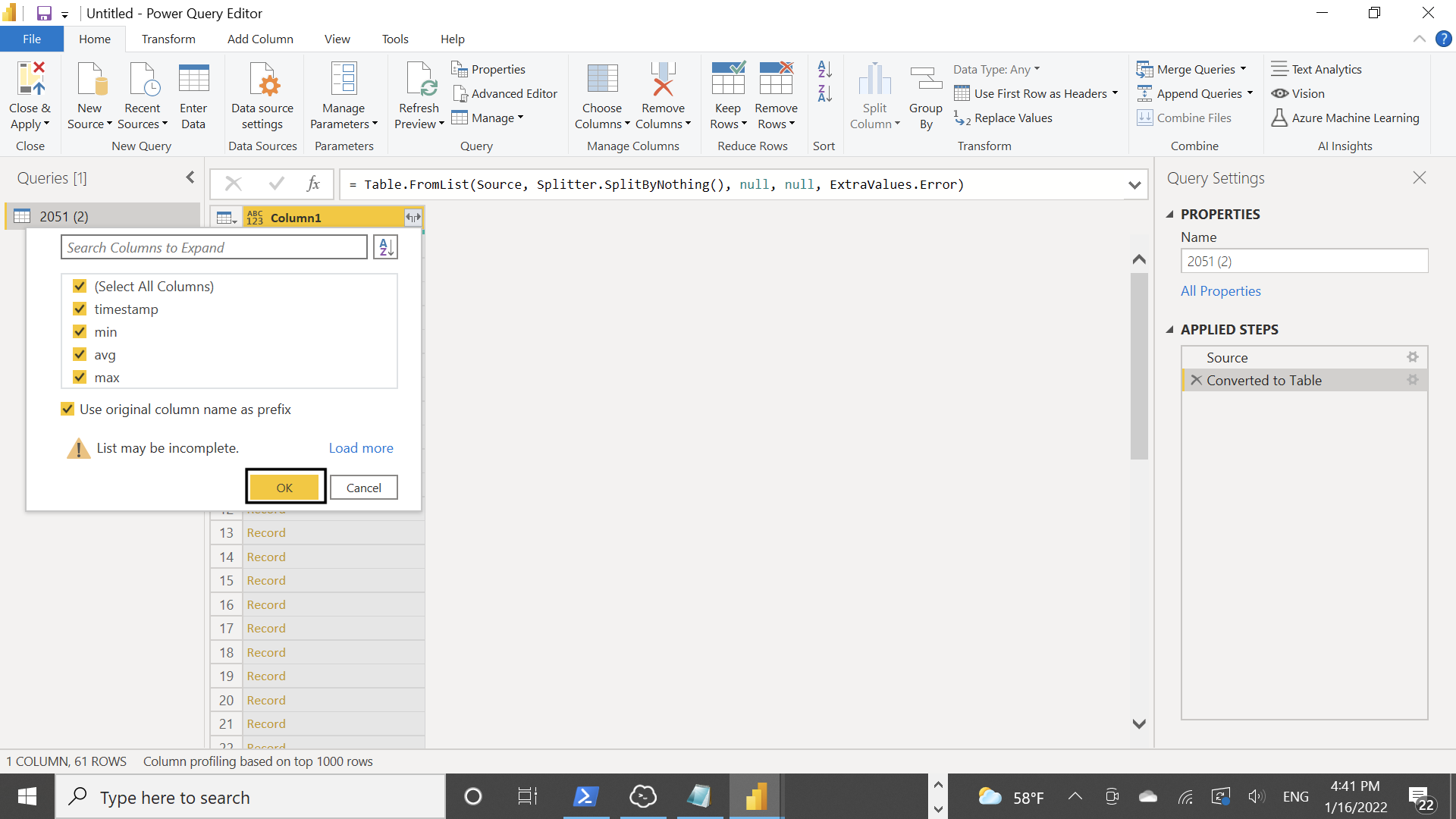
- For each column, you should update to the correct data-type otherwise PowerBI will assume the data type is string
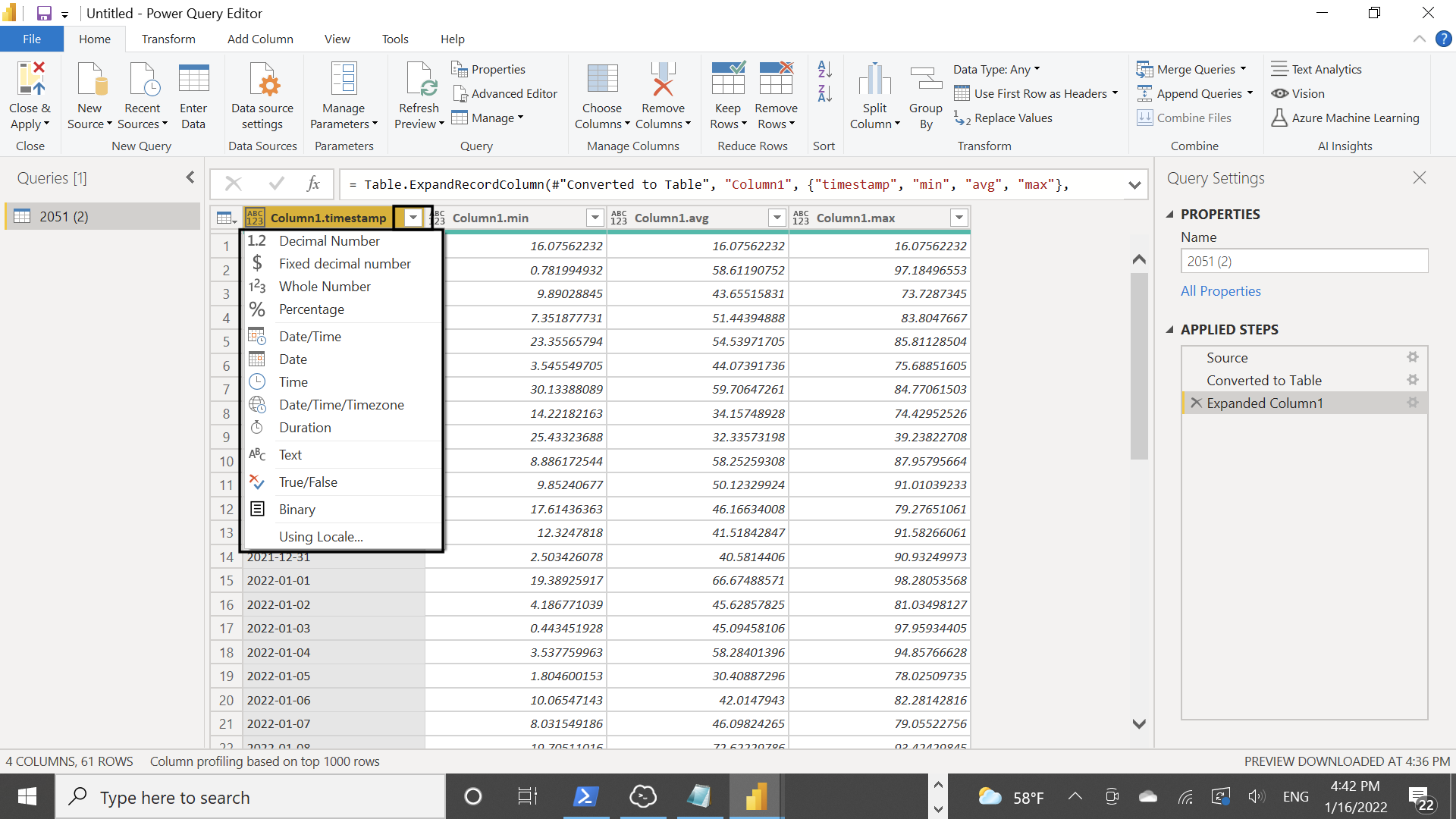
- Once updated press Close & Apply
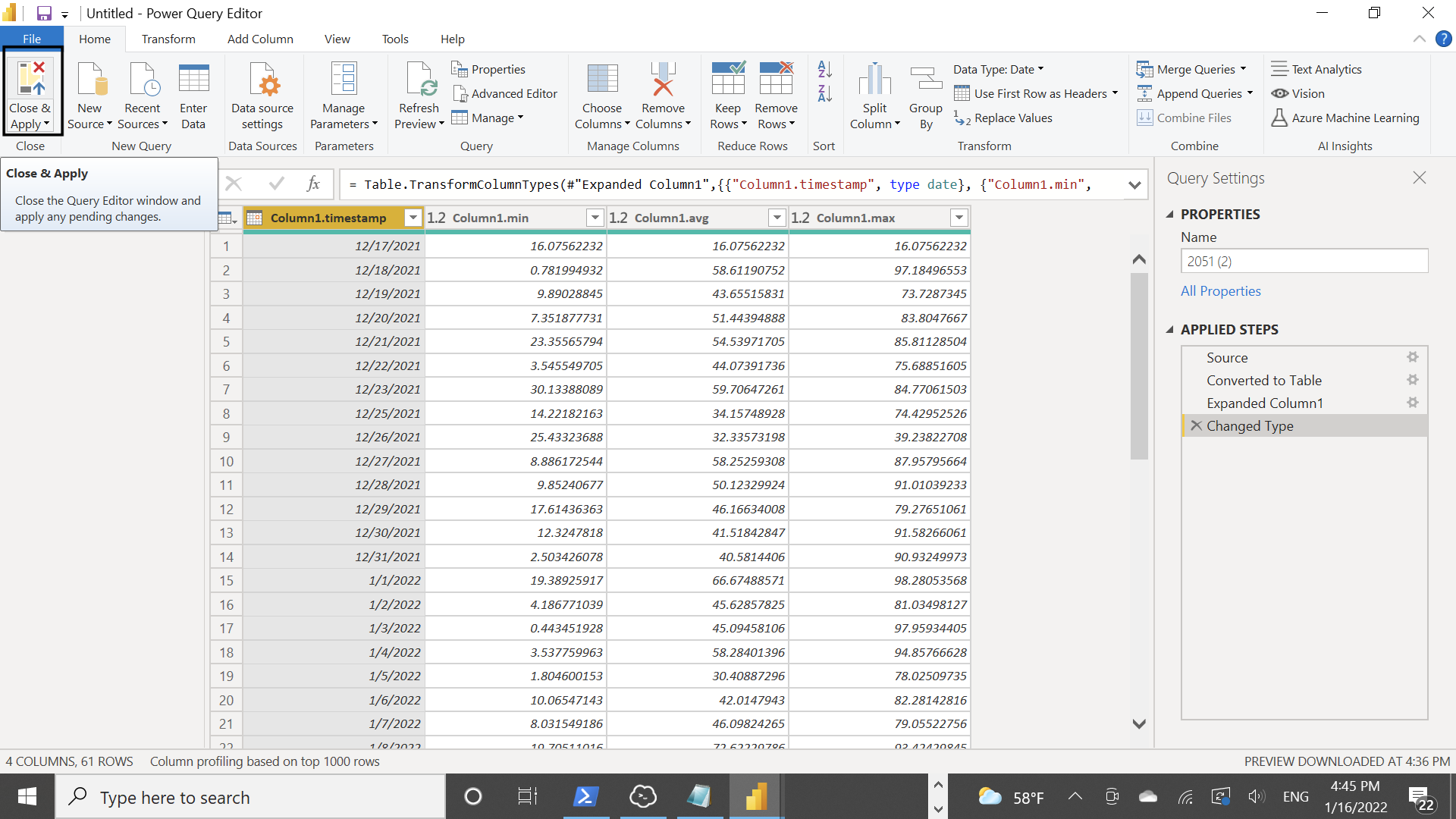
- From this point you should be able to draw tables & graphs with the data
The following shows 3 diagrams, each is assigned to its own query- The table shows number of rows per table in the database
- The bar graph shows MIN, MAX, AVG and Row Count difference between 2021 and 2022.
- The line graph uses [increments function](https://github.com/AnyLog-co/documentation/blob/master/queries.md#the-increment-function) to MIN, MAX and AVG over time

Error Handling
When converting raw content into Text, PowerQuery Editor will show results. However, it will not separate the JSON keys into separate columns
